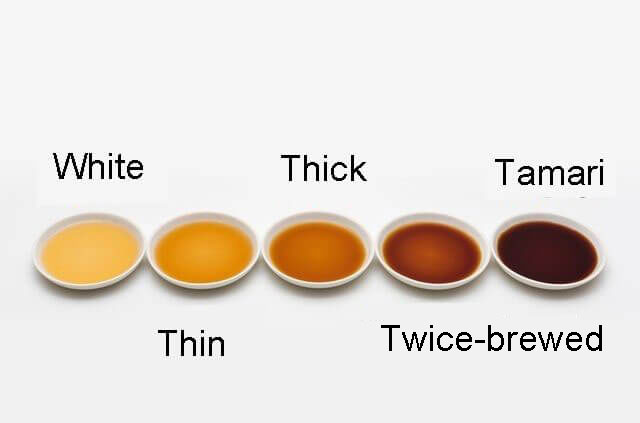As a meal without wine is a day without sun said by Louis Pasteur
a French bacteriologist
We definitely say “a meal without Shōyu (soy sauce) is a day without happiness”, in other words, the Shōyu is one of indispensable to our Japanese dinning tables.
Hi everyone how are you today? Today’s topic is “Shōyu (soy sauce)” which is as I mentioned now a necessity for our every meals.
Contents
What’s Shōyu. then?
Shōyu, it is a multi-purpose condiment essential to Japanese cooking. Sushi and sashimi(raw fish) are dipped in it before eating. Sukiyaki meat smells and tastes great because it’s seasoned with it.
There are many kinds. The koikuchi (full body) variety is the most common one. It’s dark-purple in colour and has a strong aroma.
Whereas, the usukuchi variety is pale. It’s perfect for accetuating the tastes and colours of natural ingredients.
By using different types of it accoding to your cooking needs, you can make your dishes taste better and look better.
History of Shōyu
People around the world today appreciate and enjoy it.
So let us take a look at the history of this versatile seasoning
In both the East and West, people for centuries have sought better ways to preserve food, discovering through experience that the use of salt not only preserves but also improves flavor.
This is because microorganisms break down the proteins contained in food into taste-enhancing umami(deliciousness) components.
In ancient China, preserved foods and their seasonings were known as jiang—perhaps the forerunner to what we now know as Shōyu.
Meat, seafood, vegetables and grain were used to produce different types of jiang. Of these ingredients, grain was the most easily available and manageable, and so the jiang made from soybeans and wheat in particular developed more rapidly.
Shōyu in its current form was created about 2,200 years ago during the Western Han dynasty of ancient China, and spread throughout East and Southeast Asia where it is used in cooking and as a condiment.
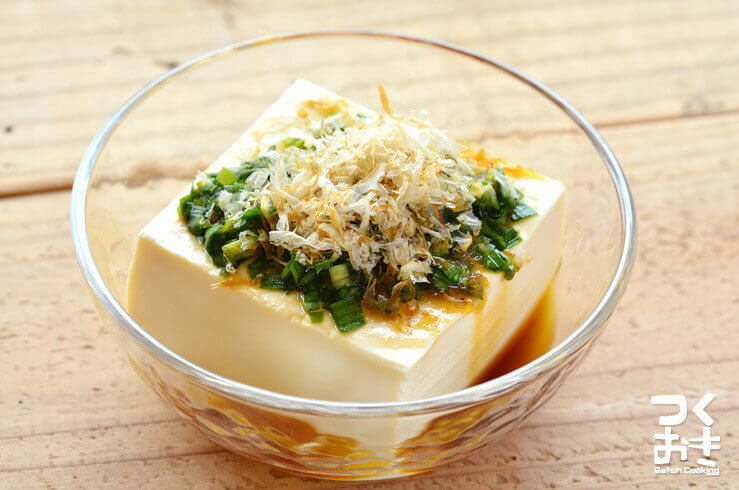 Tofu with toppings of green onion, bonito flakes, and soy sauce, delicious hiyayakko(cold tofu), ready to eat!
Tofu with toppings of green onion, bonito flakes, and soy sauce, delicious hiyayakko(cold tofu), ready to eat!
The process of making this “grain jiang” eventually spread from China into Japan and other neighboring countries. Today it is said to have originated from this seasoning.
After its introduction into Japan, the development and processing of jiang took a distinctive turn; by the middle of the seventeenth century, the process of producing naturally brewed it using the traditional Japanese brewing process had been established here, and began to spread throughout the country.
How is Shoyu made from?
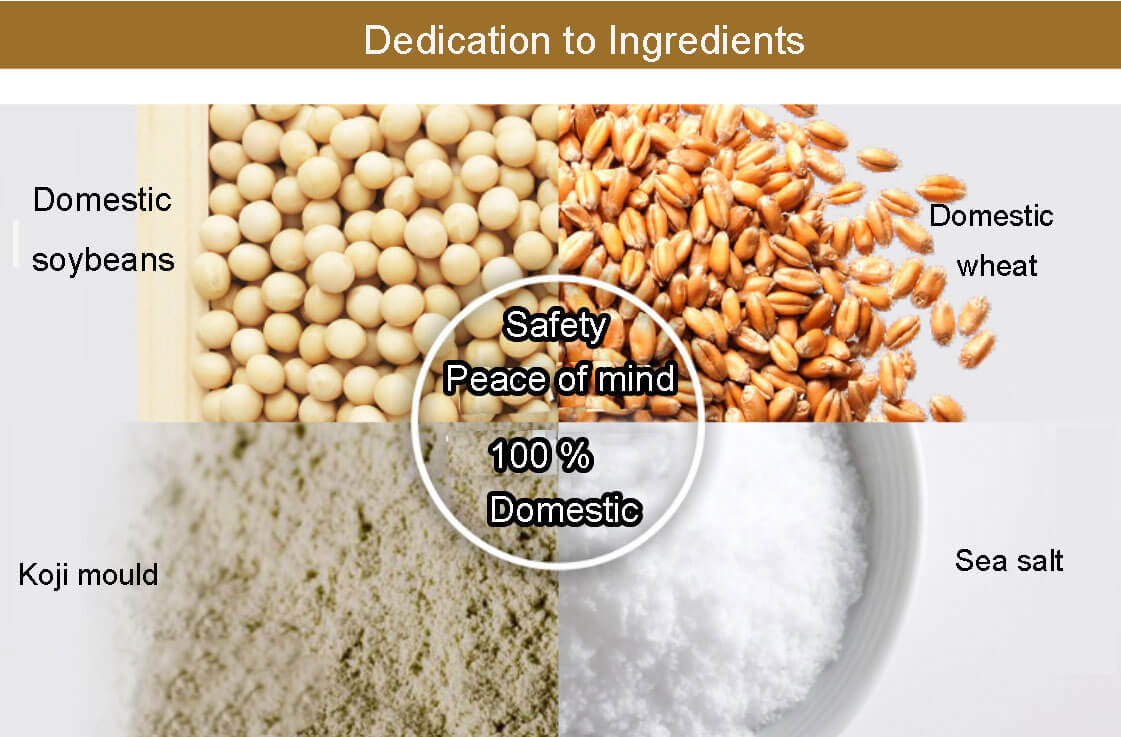
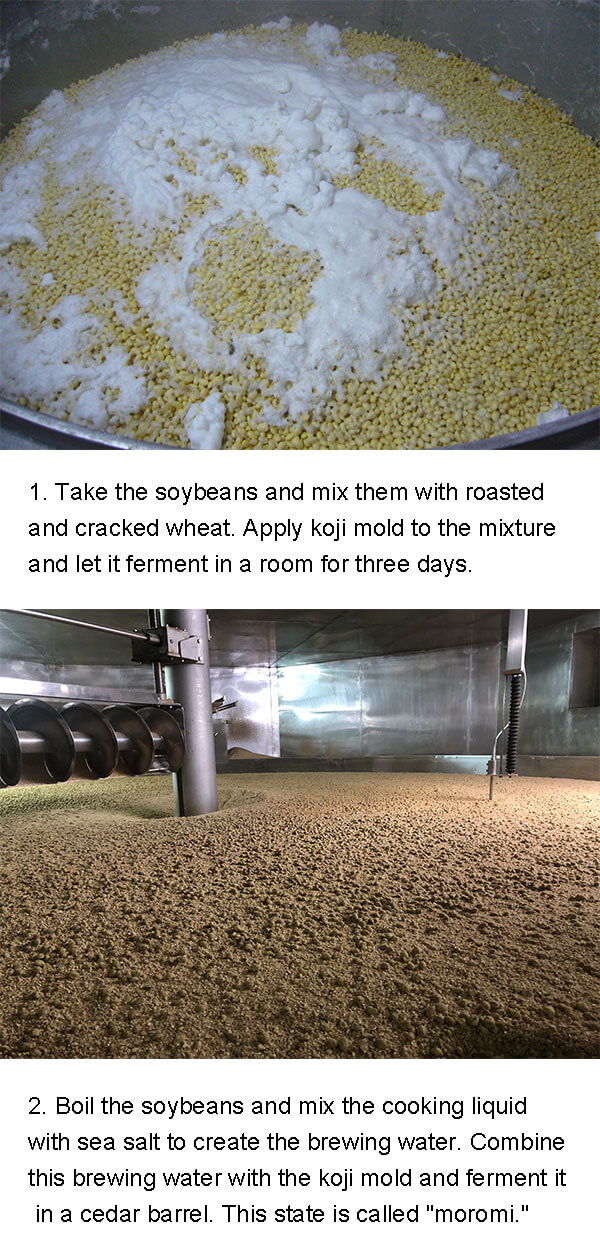

3. The moromi is stirred with a paddle, oxygen is sent into the barrel, and the moromi is turned upside down to ensure proper fermentation and maturation.
4. This stirring process is carried out for approximately 2 years, around 700 days, allowing for a thorough maturation.
It is a traditional soy sauce carefully crafted by artisans in old-fashioned wooden barrels. It acquires a rich aroma and a deep, flavorful taste by being brewed during the harsh cold winter and matured for approximately 2 years in natural cedar barrels.
Without adding anything after squeezing it from the cedar barrels, it brings out the natural sweetness of soybeans, resulting in a mellow and deep flavor.



Once the sediment has settled, only the upper portion of the soy sauce without sediment is taken out and undergoes heat treatment.
At this time, not only are the bacteria killed, but a fragrant aroma called “hiirega” characteristic of soy sauce is also produced.
The heat-treated soy sauce is then placed in a settling tank for about two weeks to cool. Afterwards, it is semi-automatically filled into bottles using a machine, sealed with caps.
The bottles are manually wiped, labeled, and placed in boxes for completion! We invest a lot of time and effort, relying on human hands, to deliver it to everyone.
What’s varieties of Shōyu?
★ White: In contrast to tamari soy sauce, shiro soy sauce uses mostly wheat and very little soybean, lending it a light appearance and sweet taste. It is more commonly used in the Kansai region to highlight the appearances of food, for example sashimi.
★ Thin: Particularly popular in the Kansai region of Japan, it is both saltier and lighter in color than koikuchi. The lighter color arises from the use of amazake, a sweet liquid made from fermented rice, that is used in its production.
★ Thick: Originating in the Kantō region, its usage eventually spread all over Japan. Over 80% of the Japanese domestic soy sauce production is of koikuchi, and can be considered the typical Japanese soy sauce.
It is made from roughly equal quantities of soybean and wheat. This variety is also called kijōyu or namashōyu when it is not pasteurized.
★ Twice-brewed: This variety substitutes previously made koikuchi for the brine normally used in the process. Consequently, it is much darker and more strongly flavored. This type is also known as kanro shōyu or “sweet soy sauce”.
★ Tamari: Made mainly in the Chūbu region of Japan, tamari is darker in appearance and richer in flavor than koikuchi. It contains little or no wheat. Wheat-free tamari can be used by people with gluten intolerance.
It is the “original” Japanese soy sauce, as its recipe is closest to the soy sauce originally introduced to Japan from China.
Technically, this variety is known as miso-damari, as this is the liquid that runs off miso as it matures.
The Japanese word tamari is derived from the verb tamaru that signifies “to accumulate”, referring to the fact that tamari was traditionally a liquid byproduct made during the fermentation of miso (type of seasoning). Japan is the leading producer of tamari.
Newer varieties of Japanese soy sauce include:
★ Reduced salt: This version contains 50% less salt than regular soy sauce for consumers concerned about heart disease.
★ Light salt: This version contains 20% less salt than regular soy sauce.
All of these varieties are sold in the marketplace in three different grades according to how they were made:
★ Honjōzō (“genuine fermented”): Contains 100% genuine fermented product
★ Kongō-jōzō (“mixed fermented”): Contains genuine fermented shōyu mash mixed with 30–50% of chemical or enzymatic hydrolysate of plant protein
★ Kongō (“mixed”): Contains Honjōzō or Kongō-jōzō shōyu mixed with 30–50% of chemical or enzymatic hydrolysate of plant protein
All the varieties and grades may be sold according to three official levels of quality:
★ Hyōjun : Standard grade, contains more than 1.2% total nitrogen
★ Jōkyū : Upper grade, contains more than 1.35% of total nitrogen
★ Tokkyū : Special grade, contains more than 1.5% of total nitrogen
Other countries to be used in cooking besides Japan
These days, the use of it is not limited to Japanese cuisine. In French cuisine, for example, it’s used to add flavour to certain dishes.
And in the United States, it’s a key ingredient of teriyaki sauce. A traditional condiment in Japan.
It has crossed national borders and is now an essential element in many cuisines around the world.
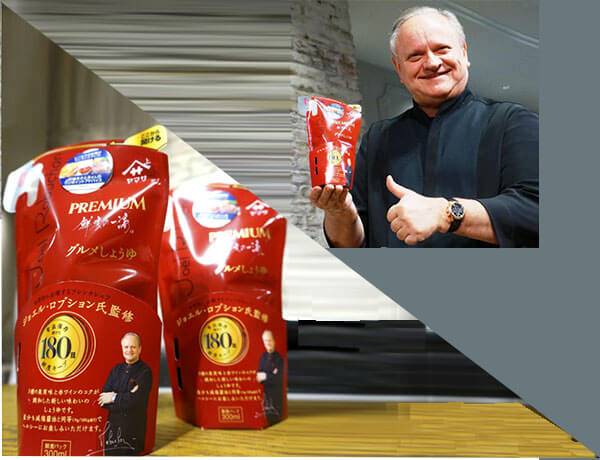 Speaking of Mr. Robuchon(above), he is also known as “The God of French Cuisine” or “The World’s Greatest Chef.” He is a charismatic chef who not only loves soy sauce(shouyu) passionately but also leads the culinary world worldwide.
Speaking of Mr. Robuchon(above), he is also known as “The God of French Cuisine” or “The World’s Greatest Chef.” He is a charismatic chef who not only loves soy sauce(shouyu) passionately but also leads the culinary world worldwide.
According to him, we were surprised to hear that nowadays French chefs use soy sauce even more than Japanese chefs do, surpassing them in their love for it!
Last but not least, “Miso (bean paste)” which is another fermented food and well worth visiting, thanks




